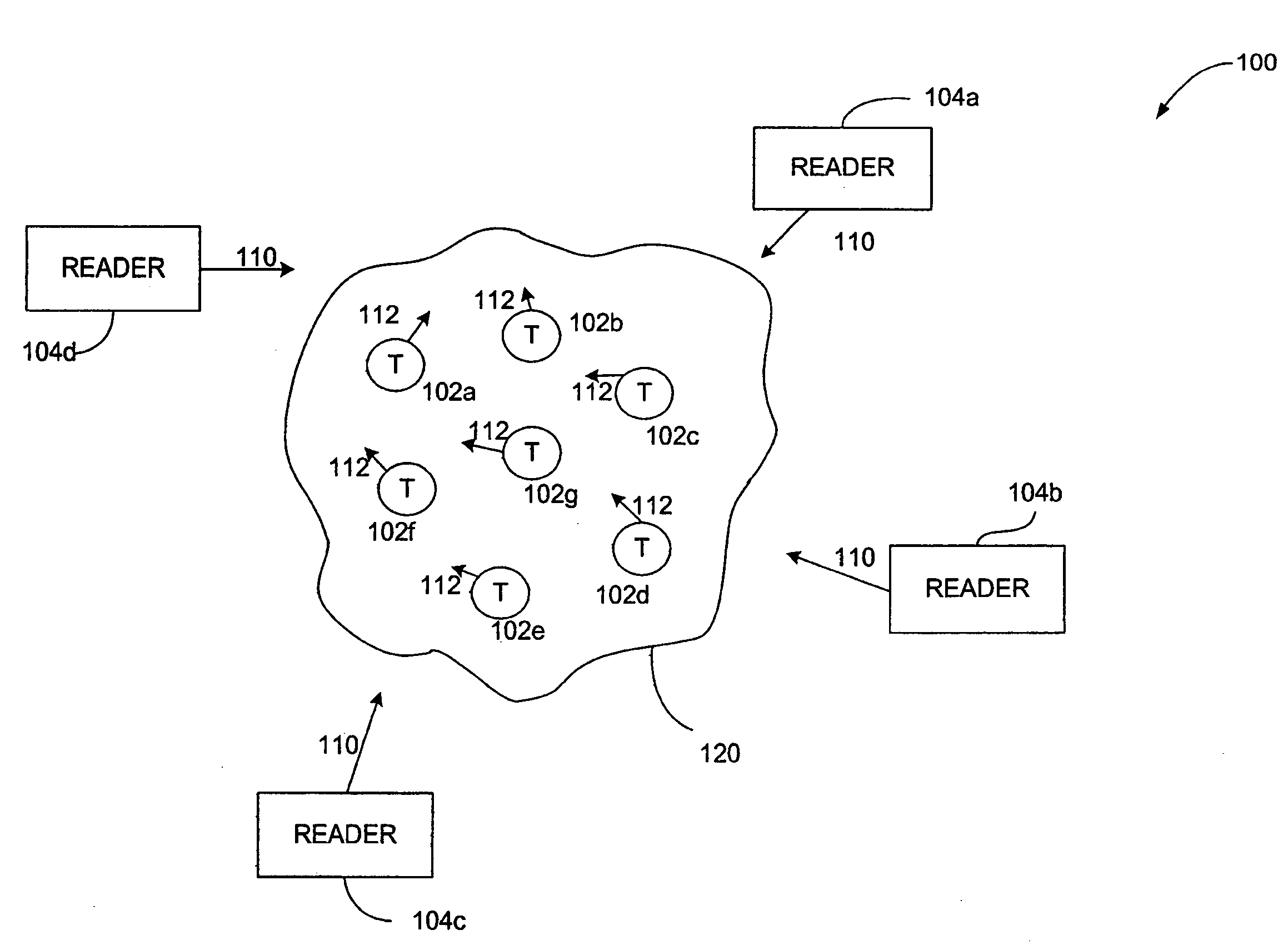Frequency selective surface aids to the operation of RFID products
- Summary
- Abstract
- Description
- Claims
- Application Information
AI Technical Summary
Problems solved by technology
Method used
Image
Examples
Embodiment Construction
[0022]I. Introduction
[0023]Embodiments of the present invention are directed to RFID products that utilize a frequency selective surface (FSS) to provide improved functionality and performance. As described in more detail herein, an FSS is a surface having specially designed elements that have a predetermined effect on electromagnetic waves that are incident thereon. The elements of an FSS vary depending on whether the FSS has transmission properties, reflective properties, or band stop properties. For a transmission-type FSS, the elements typically comprise slots and / or gaps. For a reflective-type or band stop-type FSS, the elements typically comprise complimentary structures. In accordance with an embodiment of the present invention, the use of an FSS in combination with an RFID antenna provides solutions to at least three example classes of problems.
[0024]A first example class of problems is associated with the diverse types of environments in which RFID tags are located. These e...
PUM
 Login to View More
Login to View More Abstract
Description
Claims
Application Information
 Login to View More
Login to View More - R&D
- Intellectual Property
- Life Sciences
- Materials
- Tech Scout
- Unparalleled Data Quality
- Higher Quality Content
- 60% Fewer Hallucinations
Browse by: Latest US Patents, China's latest patents, Technical Efficacy Thesaurus, Application Domain, Technology Topic, Popular Technical Reports.
© 2025 PatSnap. All rights reserved.Legal|Privacy policy|Modern Slavery Act Transparency Statement|Sitemap|About US| Contact US: help@patsnap.com



